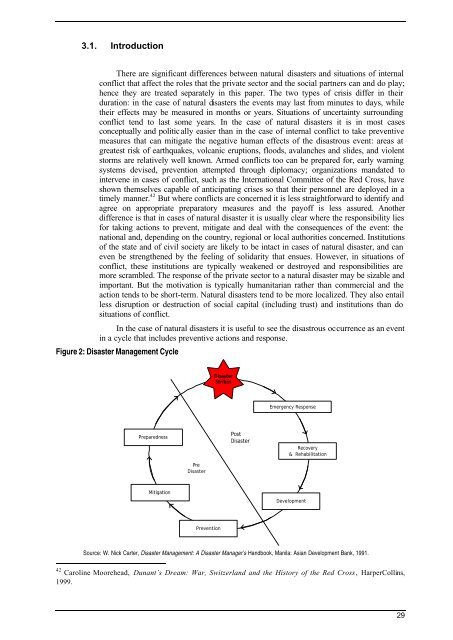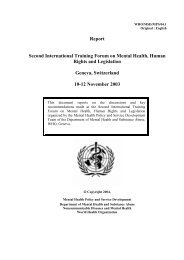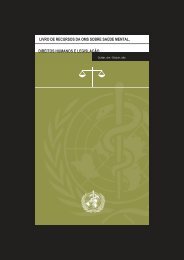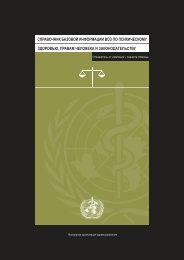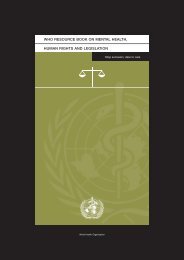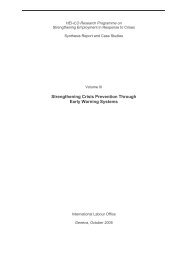Volume 1 Cedric - revised luca Final - RUIG-GIAN
Volume 1 Cedric - revised luca Final - RUIG-GIAN
Volume 1 Cedric - revised luca Final - RUIG-GIAN
Create successful ePaper yourself
Turn your PDF publications into a flip-book with our unique Google optimized e-Paper software.
3.1. IntroductionThere are significant differences between natural disasters and situations of internalconflict that affect the roles that the private sector and the social partners can and do play;hence they are treated separately in this paper. The two types of crisis differ in theirduration: in the case of natural disasters the events may last from minutes to days, whiletheir effects may be measured in months or years. Situations of uncertainty surroundingconflict tend to last some years. In the case of natural disasters it is in most casesconceptually and politically easier than in the case of internal conflict to take preventivemeasures that can mitigate the negative human effects of the disastrous event: areas atgreatest risk of earthquakes, volcanic eruptions, floods, avalanches and slides, and violentstorms are relatively well known. Armed conflicts too can be prepared for, early warningsystems devised, prevention attempted through diplomacy; organizations mandated tointervene in cases of conflict, such as the International Committee of the Red Cross, haveshown themselves capable of anticipating crises so that their personnel are deployed in atimely manner. 42 But where conflicts are concerned it is less straightforward to identify andagree on appropriate preparatory measures and the payoff is less assured. Anotherdifference is that in cases of natural disaster it is usually clear where the responsibility liesfor taking actions to prevent, mitigate and deal with the consequences of the event: thenational and, depending on the country, regional or local authorities concerned. Institutionsof the state and of civil society are likely to be intact in cases of natural disaster, and caneven be strengthened by the feeling of solidarity that ensues. However, in situations ofconflict, these institutions are typically weakened or destroyed and responsibilities aremore scrambled. The response of the private sector to a natural disaster may be sizable andimportant. But the motivation is typically humanitarian rather than commercial and theaction tends to be short-term. Natural disasters tend to be more localized. They also entailless disruption or destruction of social capital (including trust) and institutions than dosituations of conflict.In the case of natural disasters it is useful to see the disastrous occurrence as an eventin a cycle that includes preventive actions and response.Figure 2: Disaster Management CycleDisasterStrikesEmergency ResponsePreparednessPostDisasterRecovery& RehabilitationPreDisasterMitigationDevelopmentPreventionSource: W. Nick Carter, Disaster Management: A Disaster Manager’s Handbook, Manila: Asian Development Bank, 1991.42 Caroline Moorehead, Dunant’s Dream: War, Switzerland and the History of the Red Cross, HarperCollins,1999.29


